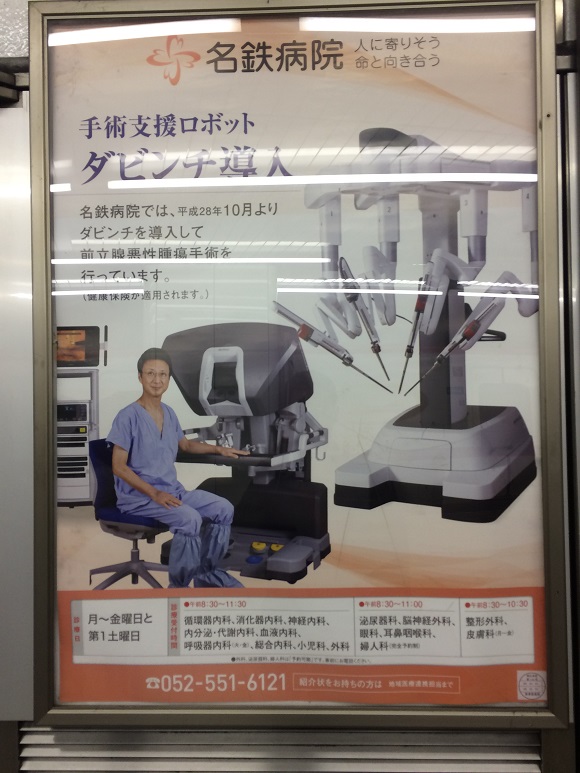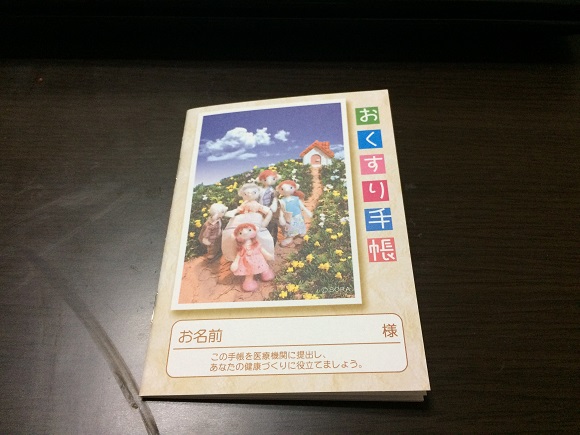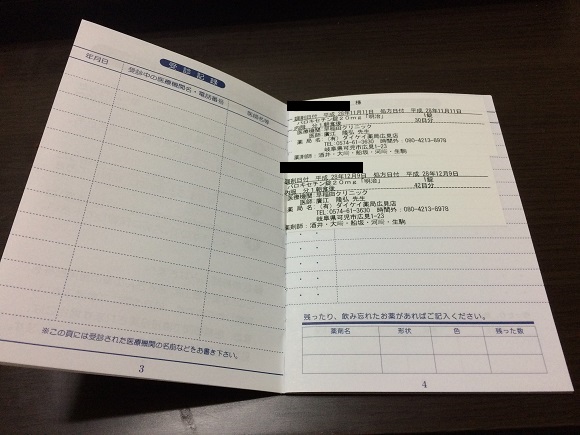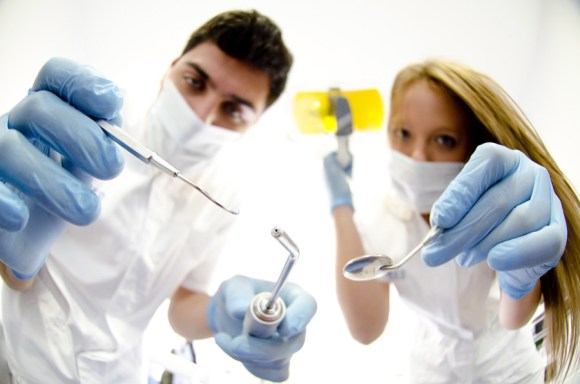
“Wait, you want to put that thing where?!”
I’ll be the first to admit that the medical system in my home country (the U.S.) is pretty messed up. Getting insurance can be very difficult, and the costs are through the roof. After decades of experience with it, I have to say that when it’s good it’s good, but when it’s bad it can literally bankrupt you.
Japan, however, has a completely different medical system. After several years of experience with it I’m no expert on the subject, but I’ve personally encountered a lot of things that are different in interesting ways.
That’s why today we’re counting down the top five craziest things about the Japanese medical system. Some of them are crazy awesome, and some of them are just plain crazy, but either way they’re worth knowing about.
So let’s get to it! Starting off with…
Honorable Mention: Masks are everywhere
We’ll start off with something that may be common knowledge but would be remiss not to at least mention: the fact that medical staff can often be seen wearing surgical masks.
Of course masks are a common sight in Japan, and the general populace can often be seen wearing them for reasons unrelated to health. But at hospitals and clinics, masks are more than just common; they’re actually often worn by doctors and nurses.
I don’t know what it’s like in other countries, but in the U.S. I’ve never seen a doctor or nurse wear a surgical mask outside of, well, surgery. Even patients who are coughing or sneezing their lungs out rarely wear masks.
Honestly I prefer the Japanese way of doing things. I don’t really understand the stigma against masks in the U.S. (maybe they seem too cold or clinical?), but I’d much rather interact with a doctor wearing a mask if they’ve been around sick patients all day.
#5. Scheduling with clinics and hospitals
So imagine you’ve come home after work on Friday exhausted and you go to the bathroom only to feel like you’re peeing fire. Congratulations! You have a urinary tract infection.
You need to see a doctor to get some antibiotics. So you go to the urology specialist… but he’s closed until Monday. So you go to your local clinic… but they’re closed until Monday too. You go by the local hospital just to check, but hey, would you look at that? They’re closed until Monday. The only hospital that’s open is in a city that’s a half hour away by train, which means you’re going to miss the last train back home so you’ll have to get a hotel. Oh, and only the emergency room is open, so you’re going to have to pay for emergency care.
In the end you decide to just suck down a couple gallons of cranberry juice and hope for the best until Monday rolls around.
That actually happened to a friend of mine recently, which was the inspiration to write this article. Japanese clinics and hospitals have opening hours that are all over the place, with each location having its own individual schedule. Some have normal work hours (Monday to Friday around 9 a.m. to 5 p.m.), some are open in the mornings on Saturdays, some are closed in the afternoon on certain weekdays – it varies greatly.
Unfortunately the times that hospitals and clinics are closed can sometimes align, and if you get sick inside that window, then you have to wait or find out which emergency room is open in your town’s emergency room roulette.
▼ YouTuber Texan in Tokyo talks about this scheduling quirk
of the Japanese medical system in great detail here.
But on the other side of the coin, something that is awesome about scheduling with clinics and hospitals in Japan is that most of them accept walk-ins. In fact, many of them prefer it.
When I had to get an ingrown toenail removed, I called the clinic ahead of time to make an appointment only to be told that they don’t even take appointments, they only accept walk-ins. Coming from the U.S. where you have to schedule pretty much any non-emergency visit at least a week in advance (and sometimes months in advance), this was a shock… in a good way.
I walked in, waited about thirty minutes, had the nail removed, and then was out the door, all in less than an hour total. Coming from the U.S. where I would expect to just wait an hour in the waiting room before even being seen, I was impressed.
So as long as you get sick during the clinic/hospital’s open hours, or you can figure out which ones are open outside of the normal times, you should be just fine. That is, until you have to talk to the doctor. Because in Japan…
#4. The doctor is god
In the U.S., doctors do their best to be friendly. They welcome you with a handshake, ask you how you’re doing, and even laugh and make small talk occasionally… so long as you’re not bleeding onto the floor, obviously.
But in Japan, when you enter the doctor’s room, you have entered the golden throne room of an infallible god.
▼ “Yes, mortal. Grovel before me.”
Asking questions is not encouraged, and you’re usually expected to just follow the doctor’s instructions and then leave. Asking for explanations of why they want you to take certain medication or follow a certain course is often considered insulting. They’re the doctor, after all, so they know best – your job is just to do what they say.
Combined with the somewhat awkward fact that the nurses usually hang around in the examination room (with their surgical masks on), listening in on everything makes it feel like you’re visiting a king and his attendants rather than a doctor.
▼ “I have prescribed you this leek.
Don’t ask why, just eat it three times a day.”
I personally went to a doctor a few months ago with an infection that I’d had before in the U.S., and he prescribed me something I’d never heard of. Needless to say it didn’t work, so I went back and was given something else that didn’t work. Finally I outright told him the medication that I wanted (which was what I’d used before in the U.S.), and after glaring at me with a look of “how dare you,” he gave it to me and wouldn’t you know I was better in three days.
Of course this is all anecdotal and there are some doctors in Japan who are great. But even the best Japanese doctor can still scare the crap out of you because…
#3. Some Japanese procedures are a little strange
No one likes having medical procedures done, but in Japan with the different ways things are done, it can be worse.
One of the most infamous procedures is the flu test. I’ve had the flu several times in the U.S. and gone to the doctor each time, but never once had this test performed. And yet it is very common in Japan. If you come into the doctor with a cough during the colder half of the year, chances are you’re getting it done, just in case.
What is the test? You may want to sit down when you watch it.
▼ Calling it a “mild discomfort” is a mild way of putting it.
Of course that’s not all. Another quirk of the Japanese medical system is their use of curtains, especially with gynecologists.
Though I’ve never personally experienced it, I’ve heard from my wife and others that when they go to the gynecologist in Japan, pap smears are performed with a curtain separating the doctor and the patient’s upper body.
At first glance that might sound nice. You get some privacy… in a way. But your pants are still off and your bits are being inspected, and by who? Exposing your private parts to an unknown set of hands behind a curtain can be an unnerving experience. While it’s said that this Japanese approach is due to the fact that many gynecologists performing the exam are men, and the curtain eases any anxiety patients might otherwise experience when having the test done by a male doctor, this way of doing things can be difficult to get used to.
▼ This Japanese Twitter user says they don’t like the curtain because it doesn’t let them know “what the doctor is putting in or when they’re going to do it.”
https://twitter.com/Ibtws01/status/734313651251748864
All in all, it’s the lack of communication that really makes the procedures disturbing. You’re usually just told to do something and expected to do it without any explanation. Even the doctors with the best of intentions can sometimes come off as scary mad scientists.
▼ The fact that anyone thought this was a good ad to run in my subway shows the
disconnect between what doctors think is good and what patients think is good.

#2. Health insurance
If health insurance is one of the worst parts about the American medical system, it’s one of the best parts of the Japanese one.
First, getting it is easy. As long as you’re in Japan on a visa for longer than three months, you have to apply for either Worker’s Health Insurance (through the company you work for) or National Health Insurance (through the government). All it takes is a small amount of paperwork, a few weeks of waiting, and then you get your card in the mail and you’re all set.
I’ve had the experience of both private and public health insurance in the U.S. and both were nightmares to get into. They required tons of paperwork, phone calls, and I always felt like the people on the other end were doing everything in their power to keep me from getting insurance. In Japan though, it’s not a big deal at all.
Second, the coverage is very wide. You can pretty much go to any clinic or hospital you want. I don’t know how it works in the rest of the world, but in the U.S. there are so many different types of insurance and certain doctors only accept certain ones. So there may be a doctor you like or that has their office close by, but you can’t go to them because they don’t accept your insurance.
In Japan, with few exceptions, you can go to any doctor you want. You can always buy better insurance and get access to premium services and doctors if you want, but even without that “luxury insurance,” having the freedom to go pretty much anywhere you want feels amazing.
▼ You want to go to the hunky bodybuilder doctor?
No problem. You can do that.
And lastly, it’s cheap. If you’re from a country where medical services are free or close to it, then maybe you might not think Japan’s health insurance is cheap, but compared to the U.S. in general, it’s quite inexpensive.
You typically pay about five percent of your monthly income for your monthly premium, and then when you visit the doctor, you only have to pay thirty percent of the bill. That may sound like a lot at first glance, especially if you’re from the U.S., but medical costs are much cheaper in Japan.
For example, when I had that ingrown toenail taken care of, I didn’t have insurance at the time because I’d just arrived back in Japan. I was worried about how expensive it would be, but my final bill only came to around 5,000 yen (US$44). That included consultation, anesthetic, surgery, medication, prescription… all without insurance! In the U.S. I probably would’ve had to sell an organ back to the doctor to pay for it if I didn’t have insurance.
Even ambulances, something that Americans without insurance dread riding in, are super cheap in Japan. Just a few hundred yen is added to the bill. They’re so cheap, in fact, that people abusing ambulances and getting rides to hospitals for minor injuries is kind of a problem in Japan.
▼ And of course, with Japanese health insurance, you get a cute
little book to keep track of your medical visits and medications.

▼ It’s a lot easier to just show this to the doctor you rather than faxing
your entire medical history or having to regurgitate it each time.

And the #1 craziest thing about the Japanese medical system is…
.
.
.
.
.
.
.
.
.
.
1. The annual health check
Getting a yearly checkup is something that people do all over the world. But usually they’re voluntary – you can do it if you want, or not. In Japan though, quite often it’s mandatory.
I don’t know how it works in the rest of the world, but in the U.S., aside from a few milestone doctor visits, you never have to see the doctor outside of when you’re feeling sick. In Japan though, depending on your employer, there’s a good chance you have to get what’s known as the annual health check.
What the actual health check consists of depends on what the company pays for, but when I worked at a city hall in Japan, it was very thorough. We had eye tests, hearing tests, a urine test, a blood pressure check, and even blood taken. And did I mention this was all done at city hall? During the work day?
▼ Japan, the land of convenience stores and
convenient health checkups. Nice job!
The focus of the annual health check is preventative care, checking to see if there’s anything that needs to be looked into further. Depending on your age (typically 35 or older), you also have to get a stomach scan, which involves drinking a large amount of barium and having it x-rayed. This is to check for stomach cancer, and it will involve you pooping out white barium for the next several days.
Speaking of poop, giving a stool sample is also often a part of the annual health check. Usually patients are supposed to take the sample at home and then deliver it to the doctor the next day. To help them in their quest to extract a good stool sample, they’re given a pamphlet to explain the process – a pamphlet which, of course, includes a cute poop mascot:
▼ “Be sure to do the test correctly so you can stay healthy!”
Thanks, Poop-Man! I’ll scrape you into a bottle the best I can.
So there you have it, the top five craziest things about the Japanese medical system. If you’ve been to a doctor in Japan, what was your experience like? Was it better or worse than your home country? Let us know in the comments, and when you’re ready to try and read some scribbled doctor handwriting, check out the top five most ridiculous kanji handwriting shortcuts.
References: The New York Times, japan-guide.com, The Japan Times, Reddit, Danny Choo
Top image: PAKUTASO (edited by RocketNews24)
W.T.F. Japan will be back next Thursday. In the meantime, give me a follow on Twitter and let me know if there’s any topics you’d like to see covered. See you next week!










 Japan’s amazing healthcare system summed up in photo of hospital bill for father’s heart surgery
Japan’s amazing healthcare system summed up in photo of hospital bill for father’s heart surgery 6 surprising things about having a baby in Japan
6 surprising things about having a baby in Japan Doctor punches patient in the stomach after his third visit to ER in one night
Doctor punches patient in the stomach after his third visit to ER in one night 5 tips for staying healthy while traveling in Japan this winter!
5 tips for staying healthy while traveling in Japan this winter! Japanese pediatrician goes overboard with Halloween spirit, turns clinic into horror movie scene
Japanese pediatrician goes overboard with Halloween spirit, turns clinic into horror movie scene McDonald’s new Happy Meals offer up cute and practical Sanrio lifestyle goods
McDonald’s new Happy Meals offer up cute and practical Sanrio lifestyle goods All-you-can-drink Starbucks and amazing views part of Tokyo’s new 170 meter-high sky lounge
All-you-can-drink Starbucks and amazing views part of Tokyo’s new 170 meter-high sky lounge More foreign tourists than ever before in history visited Japan last month
More foreign tourists than ever before in history visited Japan last month Super Nintendo World expansion gets delayed for several months at Universal Studios Japan
Super Nintendo World expansion gets delayed for several months at Universal Studios Japan Studio Ghibli releases new action figures featuring Nausicaä of the Valley of the Wind characters
Studio Ghibli releases new action figures featuring Nausicaä of the Valley of the Wind characters McDonald’s Japan releases a pancake pie for new retro kissaten coffeeshop series
McDonald’s Japan releases a pancake pie for new retro kissaten coffeeshop series Starbucks reopens at Shibuya Scramble Crossing with new look and design concept
Starbucks reopens at Shibuya Scramble Crossing with new look and design concept Hamster abandoned at Tokyo ramen restaurant gets new home
Hamster abandoned at Tokyo ramen restaurant gets new home The madness ends now: How to conqueror impossible-to-open Japanese convenience store snacks
The madness ends now: How to conqueror impossible-to-open Japanese convenience store snacks We travel to Fuji to see how they make Japanese toilet paper
We travel to Fuji to see how they make Japanese toilet paper Disney princesses get official manga makeovers for Manga Princess Cafe opening in Tokyo
Disney princesses get official manga makeovers for Manga Princess Cafe opening in Tokyo Beautiful new Final Fantasy T-shirt collection on the way from Uniqlo【Photos】
Beautiful new Final Fantasy T-shirt collection on the way from Uniqlo【Photos】 Is the new Shinkansen Train Desk ticket worth it?
Is the new Shinkansen Train Desk ticket worth it? Foreign English teachers in Japan pick their favorite Japanese-language phrases【Survey】
Foreign English teachers in Japan pick their favorite Japanese-language phrases【Survey】 Studio Ghibli glasses cases let anime characters keep an eye on your spectacles
Studio Ghibli glasses cases let anime characters keep an eye on your spectacles Beautiful Sailor Moon manhole cover coasters being given out for free by Tokyo tourist center
Beautiful Sailor Moon manhole cover coasters being given out for free by Tokyo tourist center Studio Ghibli releases Kiki’s Delivery Service chocolate cake pouches in Japan
Studio Ghibli releases Kiki’s Delivery Service chocolate cake pouches in Japan Japan’s bone-breaking and record-breaking roller coaster is permanently shutting down
Japan’s bone-breaking and record-breaking roller coaster is permanently shutting down New definition of “Japanese whiskey” goes into effect to prevent fakes from fooling overseas buyers
New definition of “Japanese whiskey” goes into effect to prevent fakes from fooling overseas buyers Our Japanese reporter visits Costco in the U.S., finds super American and very Japanese things
Our Japanese reporter visits Costco in the U.S., finds super American and very Japanese things Studio Ghibli unveils Mother’s Day gift set that captures the love in My Neighbour Totoro
Studio Ghibli unveils Mother’s Day gift set that captures the love in My Neighbour Totoro Domino’s Japan now sells…pizza ears?
Domino’s Japan now sells…pizza ears? New Japanese KitKat flavour stars Sanrio characters, including Hello Kitty
New Japanese KitKat flavour stars Sanrio characters, including Hello Kitty One of Tokyo’s most famous meeting-spot landmarks is closing for good
One of Tokyo’s most famous meeting-spot landmarks is closing for good Kyoto creates new for-tourist buses to address overtourism with higher prices, faster rides
Kyoto creates new for-tourist buses to address overtourism with higher prices, faster rides Sales of Japan’s most convenient train ticket/shopping payment cards suspended indefinitely
Sales of Japan’s most convenient train ticket/shopping payment cards suspended indefinitely Sold-out Studio Ghibli desktop humidifiers are back so Totoro can help you through the dry season
Sold-out Studio Ghibli desktop humidifiers are back so Totoro can help you through the dry season Japanese government to make first change to romanization spelling rules since the 1950s
Japanese government to make first change to romanization spelling rules since the 1950s Ghibli founders Toshio Suzuki and Hayao Miyazaki contribute to Japanese whisky Totoro label design
Ghibli founders Toshio Suzuki and Hayao Miyazaki contribute to Japanese whisky Totoro label design Doraemon found buried at sea as scene from 1993 anime becomes real life【Photos】
Doraemon found buried at sea as scene from 1993 anime becomes real life【Photos】 Tokyo’s most famous Starbucks is closed
Tokyo’s most famous Starbucks is closed One Piece characters’ nationalities revealed, but fans have mixed opinions
One Piece characters’ nationalities revealed, but fans have mixed opinions We asked a Uniqlo employee what four things we should buy and their suggestions didn’t disappoint
We asked a Uniqlo employee what four things we should buy and their suggestions didn’t disappoint Princesses, fruits, and blacksmiths: Study reveals the 30 most unusual family names in Japan
Princesses, fruits, and blacksmiths: Study reveals the 30 most unusual family names in Japan How to get free healthcare in Japan without insurance
How to get free healthcare in Japan without insurance Most female doctors in poll can understand Tokyo medical school reducing female applicant scores
Most female doctors in poll can understand Tokyo medical school reducing female applicant scores Japan’s extra-slim “Cinderella weight” diet target sparks debate online over health concerns
Japan’s extra-slim “Cinderella weight” diet target sparks debate online over health concerns Kyoto Animation arsonist’s treatments yield major advancement in skin transplantation
Kyoto Animation arsonist’s treatments yield major advancement in skin transplantation Everyone cuts their toenails wrong, says Japanese doctor, and here’s how to do it correctly
Everyone cuts their toenails wrong, says Japanese doctor, and here’s how to do it correctly Scandal as hospital staff take selfies, play games & hold parties while patients lie unconscious
Scandal as hospital staff take selfies, play games & hold parties while patients lie unconscious The number of doctorate students in Japan is now almost half of what it was 17 years ago
The number of doctorate students in Japan is now almost half of what it was 17 years ago Kobe hospital robbed of 6,000 surgical masks
Kobe hospital robbed of 6,000 surgical masks Japanese mom at seaside hospital with no visiting hours gets a beautiful get-well message
Japanese mom at seaside hospital with no visiting hours gets a beautiful get-well message Will you really catch a cold if you sleep under a Japanese kotatsu table?
Will you really catch a cold if you sleep under a Japanese kotatsu table? “Sudden desire to eat ice cream may indicate cancer” – Author of book on the disease
“Sudden desire to eat ice cream may indicate cancer” – Author of book on the disease Young Japanese man dies while sunbathing in his home garden
Young Japanese man dies while sunbathing in his home garden Medical university in Tokushima honors student for his gaming
Medical university in Tokushima honors student for his gaming Chinese man’s privates take 7-hour “furlough” after gruesome bike accident
Chinese man’s privates take 7-hour “furlough” after gruesome bike accident
Leave a Reply